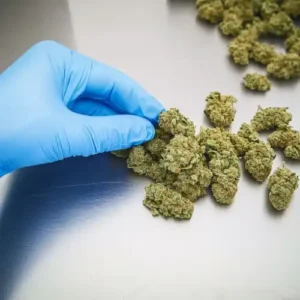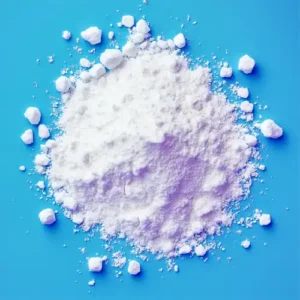Nitazenes are a new and growing threat on UK streets. These potent synthetic opioids are being added to street drugs like heroin and cocaine, often without the users’ knowledge. This has led to a spike in overdoses across the UK.
Nitazenes are similar to prescription painkillers like oxycodone and fentanyl. However, they are much stronger and have no accepted medical use. First developed in the 1950s, nitazenes have only recently begun appearing in illicit drugs.
In 2022, the UK government banned 10 types of nitazenes as Class A drugs, the most strictly controlled category. But this has not stopped their spread through the black market. The National Health Service issued an alert about nitazenes last summer after a rise in overdoses, especially among experienced drug users.
Why Are Nitazenes So Dangerous?
Nitazenes pose an extreme overdose risk due to their potency. Just a few milligrams can be lethal. For comparison, a potentially fatal dose of fentanyl is about 2 milligrams. Nitazenes can be 5 times more powerful than fentanyl.
This extreme potency makes precise dosing almost impossible, especially when nitazenes are mixed into street drugs of varying purity. Just a tiny amount of contaminated heroin or cocaine could deliver a fatal overdose.
Nitazenes also have a rapid onset of action. Their effects kick in within minutes, compared to 15-30 minutes for other opioids. This compressed timeframe provides less margin for error and makes overdoses more likely.
Finally, nitazenes seem to override the effects of naloxone in some cases. This anti-overdose medicine may fail to fully reverse a nitazene overdose, requiring multiple doses. Their extra potency appears to overpower naloxone’s lifesaving effects.
Overdose Symptoms and Risks
When taken unknowingly, nitazenes can easily lead to an overdose. Their potency means a tiny amount can be lethal. Overdose symptoms include:
- Unresponsiveness
- Slowed or irregular breathing
- Constricted pupils
- Cold, pale, or blueish skin
- Blue lips and fingers
How Widespread Are Nitazenes?
Nitazene-related deaths have occurred across the UK, indicating their presence in heroin, cocaine, and counterfeit medication. Areas affected include London, the North West, Yorkshire, and Northern Ireland.
However, experts say national data under-reports the true scale. For example, nitazenes may not show up on basic toxicology screening. And overdoses are often attributed to other opioids like heroin or fentanyl.
Limited data suggests nitazenes now appear in 5-10% of UK drug deaths involving opioids. But the prevalence is likely higher, especially in some regions. Frontline workers report nitazenes turning up in 30-40% of heroin samples tested in parts of Northern England.
Key Facts
Some key facts about nitazenes:
- Up to 5 times stronger than fentanyl
- First emerged on the drug scene around 2019
- Found mixed into heroin, cocaine, and counterfeit prescription tablets
- Cause a sense of relaxation and detachment
- 10 types banned in 2022 as Class A drugs
- Linked to deadly overdoses across the UK
The Unpredictable Dangers of Street Drugs
The emergence of nitazenes highlights the unpredictable dangers of illicit drugs. Unregulated substances often contain unknown and hazardous contaminants. One snort of cocaine or hit of heroin could now also deliver a deadly dose of an synthetic opioid.
Nitazenes mostly impact experienced drug users so far. But anyone experimenting with street drugs is taking a serious risk. These super-potent opioids exacerbate the existing dangers of opioids. Their presence in the illicit market makes every use potentially life-threatening.
Staying Safe
Staying informed helps avoid nasty surprises. Being alert to overdose symptoms and having naloxone on hand could save a life. But the only way to avoid the threats posed by nitazenes and other contaminants is to steer clear of street drugs altogether.
Photo by Zoom Testing
Zoom Testing is a leading UK drug testing company and a supplier of Drug Test Kits.





